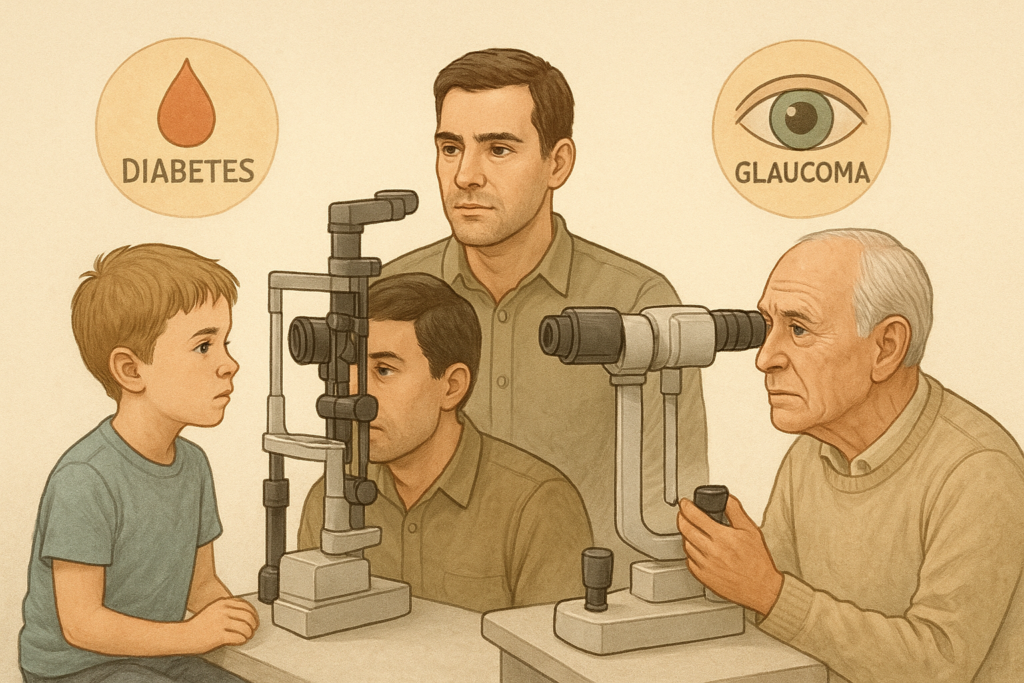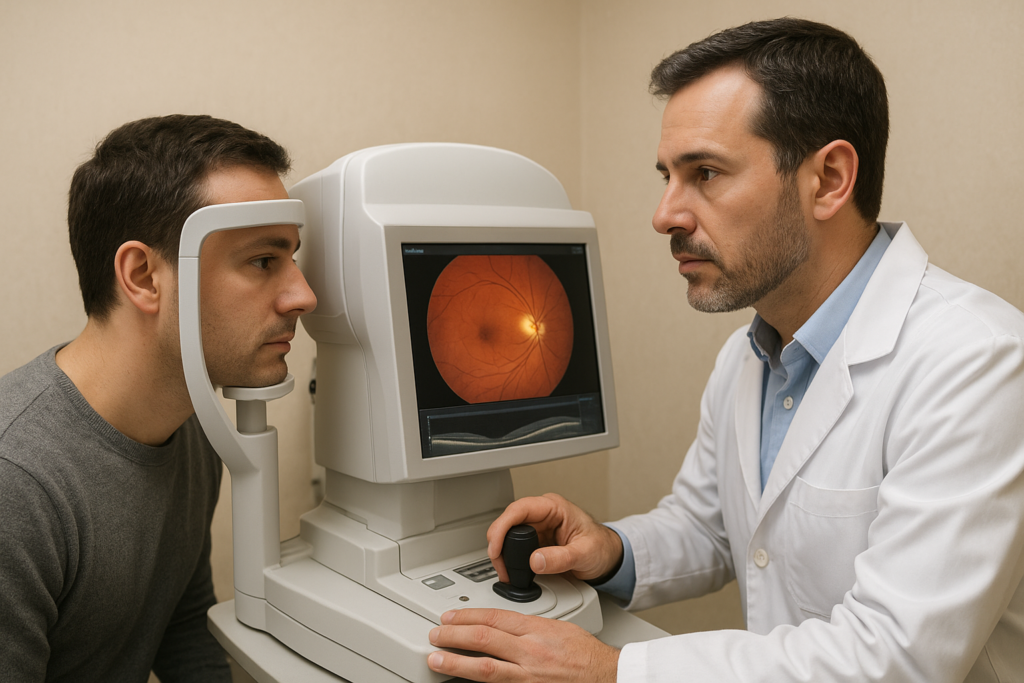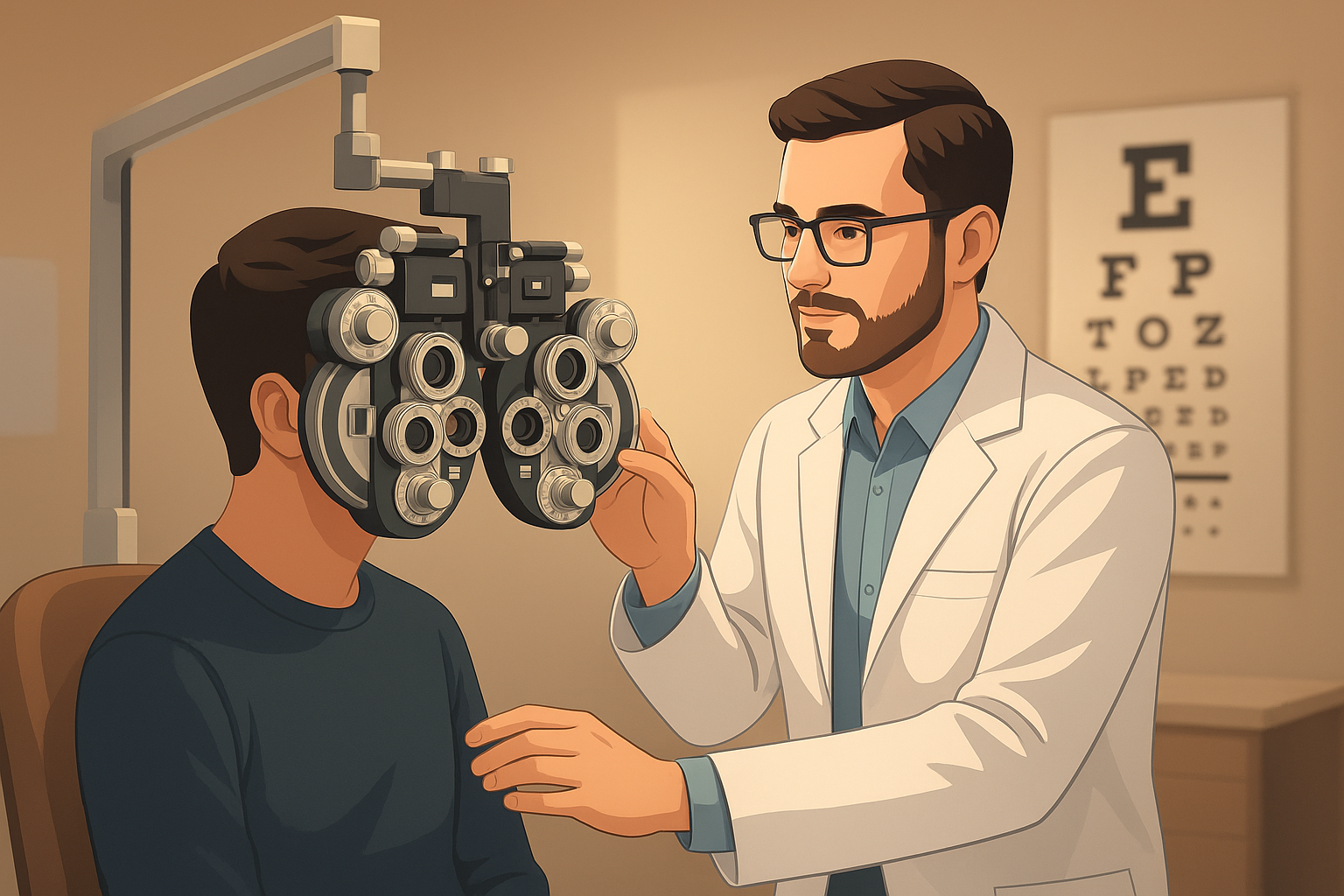Introduction
Regular eye exams are not just about updating your prescription for glasses or contact lenses. They are an essential part of maintaining your overall health and preventing vision-threatening conditions. Many eye diseases—such as glaucoma, diabetic retinopathy, and macular degeneration—develop silently without obvious symptoms until significant damage has occurred.
But how often should you schedule an eye exam? The answer depends on your age, risk factors, and whether you already wear corrective lenses. Understanding the ideal Eye Exam Frequency is crucial for proactive health management. In this definitive guide, we’ll break down the recommended eye exam schedule by age group, highlight key risk factors that may require more frequent checkups, and provide practical tips for maintaining lifelong vision health.
1. Why Eye Exams Are Your Ultimate Preventive Health Tool
A comprehensive eye exam is much more than a vision check; it is a critical diagnostic window into your circulatory and nervous systems. This is the foundation of establishing the correct Eye Exam Frequency for you.
Early Detection of Ocular Diseases
Conditions like glaucoma, cataracts, and age-related macular degeneration (AMD) are often asymptomatic in their early stages.
- Glaucoma: The “silent thief of sight,” which damages the optic nerve, can be detected years earlier through tonometry and optic nerve imaging during a routine Eye Exam Frequency.
- Diabetic Retinopathy: Changes in retinal blood vessels caused by diabetes can be spotted early, allowing for timely intervention that can prevent irreversible vision loss.
Overall Health Screening: The Eye-Body Connection
Ophthalmologists can detect early signs of systemic health issues before they are recognized elsewhere:
- Diabetes: Microaneurysms and hemorrhages in the retina are classic indicators.
- High Blood Pressure: Retinal artery changes (retinal arteriolar narrowing) often correlate directly with systemic hypertension.
- Neurological Conditions: Certain vision changes, optic nerve anomalies, or visual field defects can indicate neurological issues, brain tumors, or multiple sclerosis.
2. Recommended Eye Exam Frequency by Age Group
The risk profile of your eyes changes dramatically with age, necessitating different scheduling requirements.
Infants and Toddlers (0–2 years)
- First Exam: Recommended at 6–12 months of age.
- Focus: Pediatricians and eye doctors check eye alignment, focus, basic visual responses, and the presence of any congenital conditions (e.g., congenital cataracts).
- Early Detection is Critical: Screening is essential for identifying conditions like lazy eye (amblyopia) and strabismus, which are most treatable when addressed before age two.
Children and Adolescents (3–17 years)
- Ages 3–5 (Pre-School): At least one comprehensive eye exam before school entry to check for amblyopia and significant refractive errors (nearsightedness, farsightedness).
- Ages 6–17 (School Age): Every 1–2 years, unless the child has known vision problems or risk factors.
- Note: The prevalence of myopia (nearsightedness) is rising rapidly. Regular Eye Exam Frequency allows for early intervention strategies like atropine drops or orthokeratology to manage myopia progression.
Adults 18–39 years
- If Healthy & No Correction: Every 2 years is generally sufficient to check for baseline health and subtle changes.
- If Wearing Glasses or Contacts: Annually. Frequent monitoring is necessary to update prescriptions, check contact lens fit, and manage potential dry eye or eye strain issues related to corrective wear.
- Risk Factors: Individuals with systemic conditions or a family history of eye disease require annual exams.
Adults 40–64 years
- General Rule: Comprehensive exam every 1–2 years.
- The Critical Baseline: Age 40 is a crucial milestone, as this is when:
- Presbyopia (age-related reading difficulty) typically begins.
- The risk of glaucoma begins to climb, often requiring more detailed pressure checks.
- Early signs of cataracts and macular degeneration may first be observed.
Seniors 65+ years
- Required Frequency: Annually.
- Reasoning: This age group is at a significantly higher risk for all major age-related eye diseases (cataracts, AMD, glaucoma). Annual exams ensure early intervention, which is key to maintaining independence and quality of life.
3. Risk Factors That Demand Accelerated Eye Exam Frequency
If you fall into any of these high-risk categories, your Eye Exam Frequency must be accelerated to annual or semi-annual appointments, regardless of age.

Diabetes and High Blood Pressure
- Protocol: Comprehensive dilated eye exam at least once a year.
- Rationale: Diabetes can lead to diabetic retinopathy, which is the leading cause of blindness in working-age adults. High blood pressure can cause blood vessel damage in the retina. Early detection of these changes is non-negotiable.
Family History of Ocular Disease
- Glaucoma: If a first-degree relative (parent, sibling) has glaucoma, your risk increases significantly. Screening should begin early (mid-30s) and include specialized tests like OCT imaging.
- Age-Related Macular Degeneration (AMD): A strong family history necessitates regular Eye Exam Frequency checks and often includes dietary or supplement recommendations (e.g., AREDS 2).
Corrective Lenses and Digital Habits
- Contact Lens Wearers: Require annual exams not only for prescription checks but also to monitor for oxygen deprivation (hypoxia), infections, and corneal damage related to lens wear.
- High Screen Use: Frequent digital eye strain and dry eye syndrome warrant annual checks to assess tear film stability and discuss ergonomic solutions.
Did You Know?
Your **Eye Exam Frequency** should increase drastically if you have Type 1 or Type 2 Diabetes. Diabetic Retinopathy can advance rapidly and often has no pain or early symptoms. The first symptom can be sudden, severe vision loss. Annual comprehensive **Eye Exam Frequency** is mandatory for every diabetic patient.
4. Understanding the Types of Eye Exams
A comprehensive eye exam is a battery of tests. Knowing what each test reveals helps you understand the necessity of your recommended Eye Exam Frequency.
Core Diagnostic Tests
- Visual Acuity Test: Measures the sharpness of your vision (e.g., 20/20).
- Refraction Test: Determines the precise prescription needed for glasses or contacts.
- Tonometry: Measures intraocular pressure (IOP) using a puff of air or a gentle probe. This is the primary screening tool for glaucoma.
Advanced Imaging and Health Checks
- Slit-Lamp Examination: The doctor uses a high-powered microscope to inspect the front of the eye (cornea, iris, lens) for cataracts, infections, and dry eye signs.
- Dilated Fundus Exam: Widens the pupil to allow a clear view of the retina and optic nerve. Essential for diagnosing AMD, diabetic retinopathy, and checking for retinal tears.
- OCT (Optical Coherence Tomography): Provides detailed, cross-sectional images of the retina and optic nerve (similar to an MRI for the eye). This is critical for monitoring high-risk patients (glaucoma, AMD, diabetes) and tracking structural damage.
- Digital Retinal Imaging (Optomap): Modern technology allows wide-field imaging of the retina without the need for dilation in all cases, making the check-up faster and easier, especially for busy adults following a tight Eye Exam Frequency schedule.

5. Tips to Maximize the Benefits of Your Eye Exam
Prepare for your appointment to ensure the best possible outcome and to make the most of your scheduled Eye Exam Frequency.
- Bring Documentation: Have a list of all current medications (prescription, OTC, and supplements). Certain drugs can significantly affect ocular health or vision.
- Note Symptoms: Keep a running list of any changes, no matter how minor (e.g., new floaters, increased night glare, or morning redness).
- Family History Update: If there has been a recent diagnosis of an eye condition (Glaucoma, AMD) in a close relative, inform your doctor.
- Ask About Technology: Discuss the availability of non-dilated imaging (OCT or Optomap) versus the traditional dilated exam, especially if driving after the appointment is a concern.
- Discuss Blue Light and Supplements: Ask your eye doctor for personalized advice on blue light protection or specific supplements (like Lutein and Zeaxanthin) based on your risk profile.
| Eye Exam Frequency Quick Reference Table | ||
| Age Group | No Risk Factors | With Risk Factors |
| Infants (0–2) | 6–12 months | As advised by pediatrician |
| Children (3–17) | Every 1–2 years | Annually |
| Adults (18–39) | Every 2 years | Annually |
| Adults (40–64) | Every 1–2 years | Annually |
| Seniors (65+) | Annually | Annually |
FAQ – Eye Exam Frequency
Q: How often should children get an eye exam?
A: Children should have their first comprehensive eye exam at 6–12 months, then again at age 3, before starting school, and every 1–2 years afterward to monitor for refractive errors and developmental issues.
Q: How often do adults need an eye exam?
A: Healthy adults aged 18–39 should have an eye exam every 2 years. Adults aged 40–64 should go every 1–2 years, as they enter the age of increased risk for presbyopia, glaucoma, and cataracts.
Q: Do people with glasses or contact lenses need more frequent exams?
A: Yes. Anyone with refractive errors should have an annual exam to ensure their prescription is accurate, which helps prevent headaches and eye strain, and to monitor the corneal health of contact lens wearers.
Q: How often should diabetics get an eye exam?
A: People with diabetes should have a comprehensive dilated eye exam at least once a year, since they are at the highest risk for diabetic retinopathy, which can be devastating if not caught early.
Q: Is it necessary to get an eye exam if I have no symptoms?
A: Yes, absolutely. This is the core principle of Eye Exam Frequency. Many serious, sight-threatening conditions, including glaucoma and early-stage macular degeneration, develop without any noticeable early symptoms. Regular exams help detect them before irreversible vision loss occurs.
Conclusion
Regular eye exams are essential for maintaining good vision and overall health. The required Eye Exam Frequency depends on age, lifestyle, and medical history.
- Children need exams to support healthy learning and development.
- Adults should stay proactive in their 20s and 30s to catch early signs of eye strain and refractive errors.
- Middle-aged adults must begin monitoring for age-related diseases.
- Seniors require yearly exams to prevent serious vision loss.
By following these guidelines and maintaining the recommended Eye Exam Frequency, you are taking the most powerful, proactive step possible to protect your eyesight for a lifetime.



